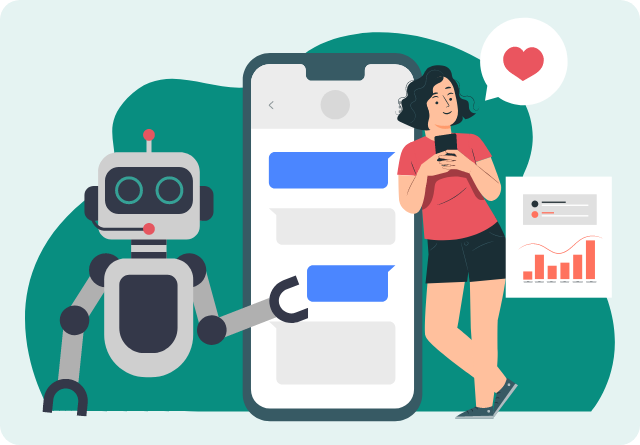When should you trigger a chatbot to human handoff?
So, we’ve seen some of the benefits that a streamlined handoff process can bring, but one of the crucial questions is when to trigger this human input. We can identify five main use cases for chatbot to human handoff:
- Complex or unusual queries
- Emotional or upset customers
- High-value clients
- Technical issues
- Complaints and escalations
1. Complex or unusual queries
Perhaps the most common case for chatbot to human handoff is when a customer has a query or issue that is so complex or unique that the chatbot cannot effectively solve it. In such instances, some older AI chatbots can become confused or repeat answers, which leads to customer agitation.
When this happens, it’s helpful to transfer the conversation to the next available human agent. Examples of this interaction can include:
- Questions involving multiple variables or deep product knowledge
- Unique or uncommon issues not covered in the chatbot’s training data
2. Emotional or upset customers
Remember the stat above about almost two-thirds of customers quitting a company because of a bad interaction? You don’t want to be part of that statistic, and there are few customers as primed to feel negative towards an interaction than those who are frustrated, angry, or distressed. All human agents can learn to achieve empathy and have an emotional intelligence AI chatbots can’t offer.
It’s far better for both the customer and their perception of your business that you hand over to a human customer service rep for those who need it.
3. High-value clients
Depending on the nature of your organisation, there will be some customer profiles that have the potential to bring significant value if they’re connected with the right person. For such high-profile customers, the personal touch can go a long way in securing their business. It’s likely that you’ll want the person with the soft skills to build longstanding relationships to nurture these hot leads, and while chatbots can certainly capture key information and intent, you’ll likely want to then trigger a handoff.
4. Technical issues
Your services and accounts are likely highly unique to your business. This means that for anything that’s out of the ordinary or highly complex, a human agent is going to be the best problem-solver for the customers’ needs. Chatbots can certainly help with many standard issues, but for more nuanced difficulties, it’s best to handover to your support team.
In a recent podcast on the Verge, Head of Bookings Holding, Glenn Fogel, references the difference between positive AI intervention and times when humans are needed. When there’s a dramatic technical issue, we need humans, he says:
“Where things go down, people are upset, and customer service numbers go off the charts. Then you have to try and figure out, “Okay, how are we going to fix this?” and it requires a lot of humans to do it as opposed to the AI.”
5. Complaints and escalations
Although hopefully rare, a customer with a complaint always needs to be treated with care and respect. It’s here where having a human rep take on the emotional aspect of the query for a swift resolution can reduce the heat and bring a better outcome for the customer.


